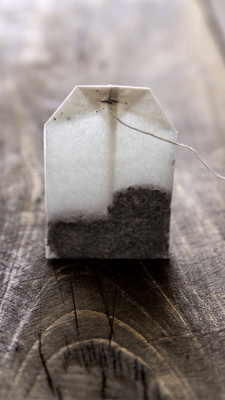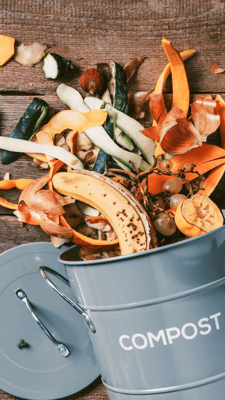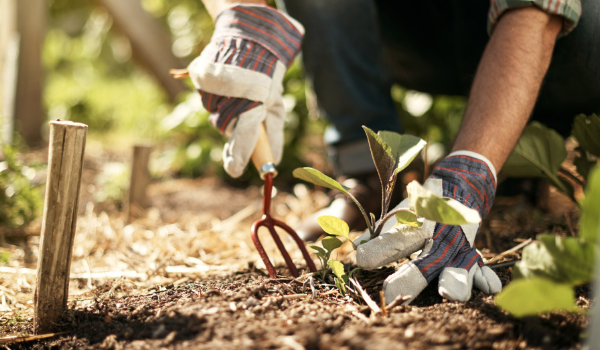Healthy soil goes a long way to producing healthy plants. Knowing what constitutes a healthy soil, and if a soil displays healthy characteristics should be part of every gardener’s repertoire. The use of simple tests of soil health can improve our understanding of soil structure, and the chemical and biological state under the ground.
Farmers actively assess their soils, as their livelihoods often depend on it; but what about the home gardener? The tests you can perform to assess soil health don’t have to be elaborate, costly or time consuming, and can tell you what you may need to do to improve or enhance the soil.
Soil health is directly linked to the ecosystem of soil life and their interactions with plants. If you know the state of your soil, you can better manage its ongoing health (and ultimately the health of your plants).
Here are our Top 5 ways to check your soil health:
1. Visual Check
 This is a quick procedure for assessing the top section of the soil. Simply take a small sample of moist soil, up to about 300mm (a foot) in depth, lay it out on a work bench or flat area, trying not to disturb it too much. Break up the soil block with your hands, making sure to observe the following characteristics as you do:
This is a quick procedure for assessing the top section of the soil. Simply take a small sample of moist soil, up to about 300mm (a foot) in depth, lay it out on a work bench or flat area, trying not to disturb it too much. Break up the soil block with your hands, making sure to observe the following characteristics as you do:
- Colour
- Is it dark brown/black or a lighter shade of brown?
- Are the colours consistent throughout the soil sample?
- Texture
- Is it crumbly or hard to break up?
- If it’s moist, can you mould it into a ball?
- Can you feel any sandy particles?
- Are there pieces of bark or other plant material evident?
- Smell
- Does it have a nice earthy aroma?
- Does it have not much smell at all?
A healthy soil will generally have a darker colour, produced by humus and a high proportion of organic matter. The texture should be crumbly and not hard and compacted. It should have a pleasant earthy aroma, indicating the presence of soil bacteria, fungi and other beneficial microbes and the breakdown of organic matter.
2. Infiltration Test
Infiltration describes the way water moves down through the soil profile. Measuring infiltration helps us to understand how the soil we have behaves with water, and provides a good indicator of soil structure, porosity and potential compaction.
Using some PVC pipe (about 30cm in length) which is open at both ends, insert it into the ground as far as you can. Now pour 500mL of water into the pipe and begin to measure the amount of time it takes for the water to disappear. A time under 1 minute demonstrates good infiltration.
 The time taken for the water to filter through the soil will vary depending on the composition and structure of the soil. Faster rates suggest good structure and aggregation (common with sandy soils), and high levels of organic matter while slower rates suggest possible compaction (common with clay soils), reduced porosity and lower levels of organic matter.
The time taken for the water to filter through the soil will vary depending on the composition and structure of the soil. Faster rates suggest good structure and aggregation (common with sandy soils), and high levels of organic matter while slower rates suggest possible compaction (common with clay soils), reduced porosity and lower levels of organic matter.
3. The Tea Bag Test
The Tea Bag Test indicates the decomposition rate of plant material, by measuring or observing tea bags buried in the garden for up to three months, helping to show the relationship between soil organic matter and composting rate. Soils containing higher levels of organic matter show faster decomposition due to the presence and action of soil microbes. After three months (or even sooner), the teabag should have completely decomposed in a healthy soil. If it is still noticeable after that time, then your soil may require some improvement to reinvigorate its health. Just be sure to use teabags which do not contain any form of plastic.
4. Do A Worm Count
 Earthworms and composting worms are a good indicator of soil structure, organic matter, and soil life.
Earthworms and composting worms are a good indicator of soil structure, organic matter, and soil life.
To perform a worm count simply dig out a shovel full of soil and spread it out on some cardboard or newspaper. Gently break up and separate the soil clumps and count the number of worms you find. Be sure to count all of the adult and juvenile worms, and record the number.
In a healthy soil, you should find at least 10 worms (along with plenty of other soil life!) in a shovel full of soil. If you counted less than 3, then your soil is in need of some improvement, usually in the form of additional organic matter, like compost. If you have a number in between 10 and 3 then your soil health is OK, but could do with some improvement.
The presence of worms in soil has many benefits including, better aeration and drainage, increased porosity, nutrient uptake and water retention. Worms feed on soil microbes and organic matter, so a higher number of worms indicates more microbes (and better soil health).
5. Lab Analysis
A standard soil test at a laboratory can provide accurate data on the presence of essential plant nutrients as well as pH. This information can help to determine if your soil is deficient in any of the essential nutrients and trace elements and the relative levels of nutrients, however does not provide much information relating to soil structure, soil life or other conditions affecting plant growth.
Laboratory tests, while being an added expense, will give you accurate data about your soil that you can use to formulate a plan to improve the health of your soil. This could mean raising or lowering the soil pH, introducing organic matter, or focussing on replenishing essential nutrients to a suitable level.
How to improve soil health
Once you have an indication of the health of your soil, you can start to make improvements or enhancements. Some of the ways to improve soil health include:
 Use a soil improver – A soil improver like Rocky Point ActivGrow Soil Improver is an organic blend of 16 active ingredients to rejuvenate tired soils. It will help to improve sandy soils with the addition of composted materials and will improve drainage in clay or compacted soils.
Use a soil improver – A soil improver like Rocky Point ActivGrow Soil Improver is an organic blend of 16 active ingredients to rejuvenate tired soils. It will help to improve sandy soils with the addition of composted materials and will improve drainage in clay or compacted soils.- Start composting – By composting at home, you’ll be keeping food scraps and other organic waste out of landfill, with the benefit of improved soil health when using it in the garden. Adding compost will increase the levels of organic matter, improving soil structure and encouraging more microbial action.
- Correct soil pH levels – Soil pH level can affect the availability of nutrients for plants, so it’s important to get the level right if it is too acidic or alkaline (a level around pH 6-7 is ideal). Your choice of mulch, fertilisers and other soil amendments all contribute to the soil’s pH.
- Introduce some composting worms or earthworms – Worms will naturally colonise your garden, but you can add them when you’re establishing a new garden. Worms are typically available from your local garden centre.
- Mulch, mulch, mulch! – Mulching with a good quality mulch like Rocky Point Sugar Cane Mulch will not only add a protective layer to your garden but will also improve the soil structure with organic carbon and add essential nutrients to the soil as it breaks down.
Good soil health is vital for sustaining plant growth. Whether you are growing edibles or ornamentals, it’s important to continually check on the health of your soil and take action if necessary, ensuring your garden is always at its best.
_MEB.png?width=842&height=596&name=RP_HorizontalColour(R)_MEB.png)



